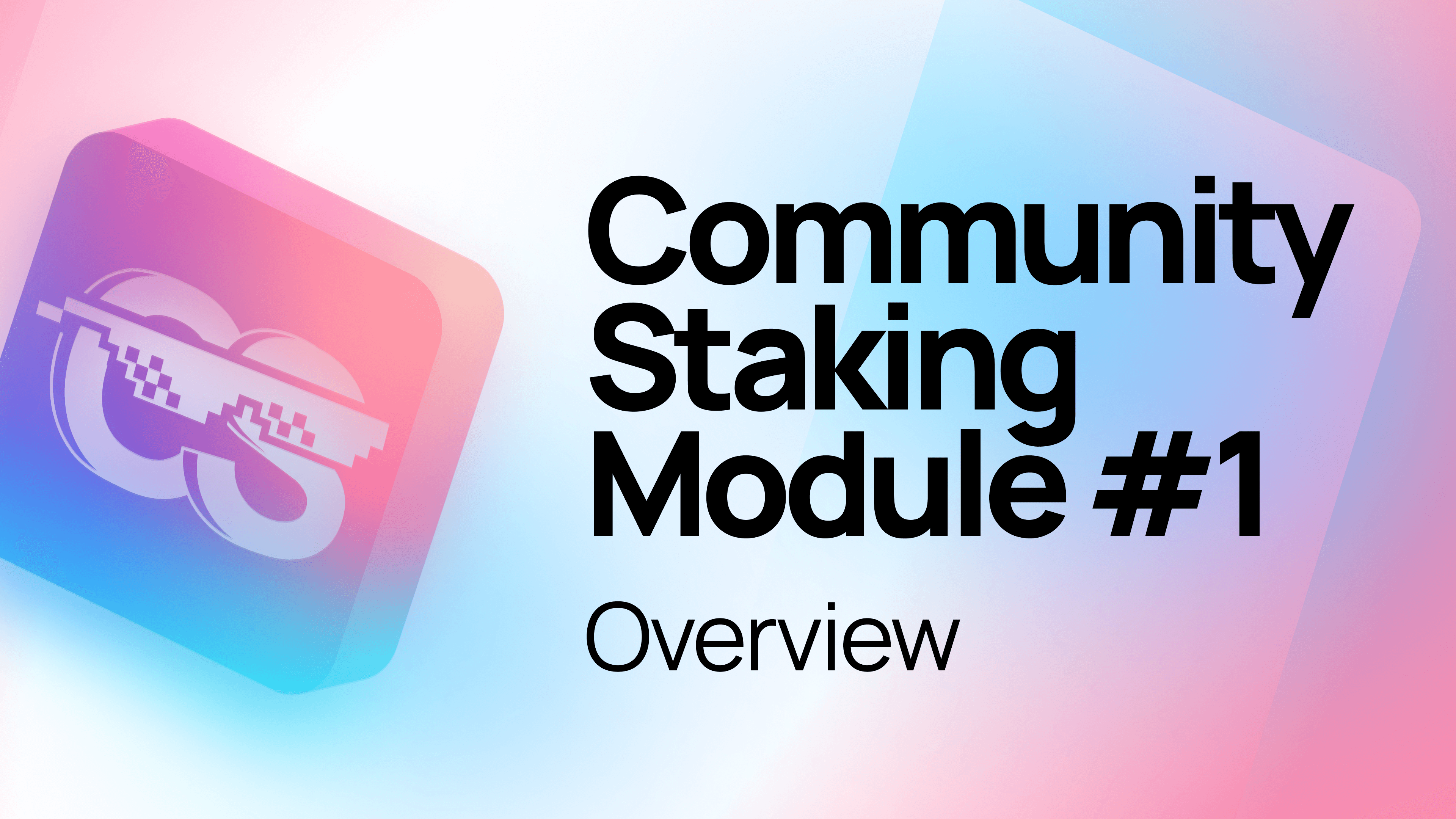Lido Community Staking: Overview

On December 15th, the Lido DAO gave the green light for the development of Community Staking Module (CSM), paving the way for community stakers to utilize the Lido protocol to run validators in a permissionless manner.
To assist the community in understanding the workings of the CSM, a series of four explanatory blog posts will be published, covering:
- #1: Overview of Community Staking Module (CSM)
- #2: Bonding
- #3: Rewards & Penalties
- #4: Stake allocation & Validator Exits
What is Community Staking Module (CSM)?
The term “community stakers” has been widely used throughout the Lido forums to refer to independent individuals (e.g. solo stakers) or groups running Ethereum validators.
Community Staking Module (CSM) will most likely be the third Lido on Ethereum module after the Curated Module and Simple DVT, and the first to offer permissionless entry allowing community stakers to operate validators by providing an ETH-based bond.
1. Goals
To narrow the initial goals from the Lido Community Staking Manifesto and form more practical applications, the following CSM goals were accepted:
- Allow for permissionless entry to the Lido on Ethereum Node Operator set and enfranchise solo-staker participation in the protocol;
- Increase the total number of independent Lido on Ethereum Node Operators to 300+ independent Node Operators within months of mainnet launch.
2. Key Features
To make CSM more attractive to the community stakers, the following features were introduced:
- EL rewards and MEV are smoothened with the other modules (e.g. the Curated Module) so CSM Node Operators could potentially gain more stable rewards that are closer to the average MEV ones;
- A reasonably low bond is targeted for Node Operators so it can cover more prospective operators;
- ETH (stETH) is the only token for bond and rewards without any involvement of other assets;
- Node Operators are provided with more friendly UX and pay less gas fees for on-chain operations;
- Node Operators are supposed to gain more rewards than vanilla solo staking;
Why Community Staking Module?
Lido started with a mission to keep Ethereum decentralized and to democratize access to staking. Currently Lido has only one Node Operator module, which is DAO-curated and consists of 37 professional staking providers.
In an effort to enhance the protocol’s decentralization by incorporating a broader range of operators, the Lido DAO approved the development of a module that allows for permissionless Node Operator entry.
In light of two upcoming Ethereum features estimated to be released in the near future, it is more feasible for the protocol to sustainably accommodate permissionless access. Namely, EIP-4788 will allow Lido smart contracts to fetch data (e.g. validator balances) in a trust-minimised way, and EIP-7002 will allow Lido for on-chain exit of malfeasant protocol validators through the protocol’s validator withdrawal credentials.
A variety of mechanisms, including bonding, reputation & DVT could be employed to cultivate a more diverse operator base. At this juncture, CSM was proposed to adopt a bond-based design since it has proven to be a great approach to validator set formation. A bond can be used as cover for inappropriate actions (e.g. validators’ offline, slashing, or MEV stealing) and as an alignment mechanism between Node Operators and stakers.
Potential Partnerships
Community participation in either running validators or building tools is a key step for a successful permissionless module, so the Lido CS team contributors are eager to establish partnerships and collaboration with the Ethereum ecosystem for tooling development that could facilitate the use of the CSM.
Some notable examples of such tools include DappNode, Avado, Stereum, Sedge, and eth-docker. If you have any ideas, please reach out in the research forum.
What’s Next?
Since the vote has passed, the DAO agreed on the proposed timeline below.
Holesky testnet deployment for CSM is assumed to happen in Q2-Q3 2024. Furthermore, the mainnet release was scheduled in Q3-Q4 2024, assuming there are no significant obstacles or implementation issues.